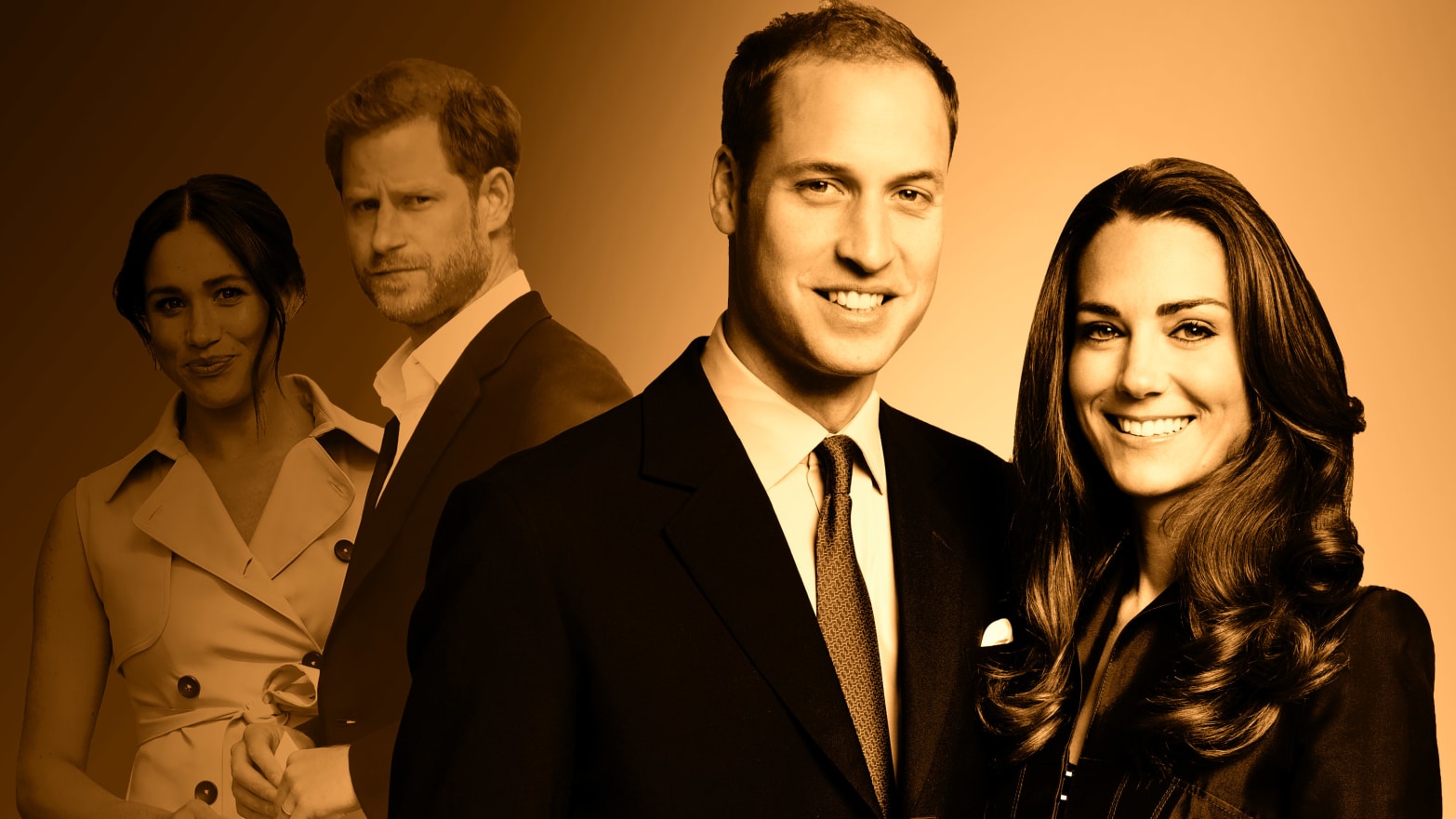The last time that the impending demise of the British monarchy was proclaimed with real conviction, it was outside the flower-strewn gates of Kensington Palace, as a shell-shocked nation absorbed the tragic death of Princess Diana.
Such was the global and national anger at the monarchy in the strange weeks before and after Diana’s funeral, that it really did seem possible the whole edifice of gilt and gold might topple to the ground and be revealed as nothing more than a moth-eaten music hall set.
Ironically, it was Queen Elizabeth, the figurehead of the institution of monarchy that was being indicted for its cruelty hourly on the news, who came to the rescue, confounding the critics and republicans with her famous “as a grandmother” speech. She reportedly received help on its composition from that master of ’90s spin, Tony Blair.
Twenty-three years later, the royal family finds itself in another existential crisis following its dismal failure to keep Meghan and Harry in the Firm.
This crisis is very different from the Diana crisis or the abdication crisis of 1936. To borrow from the language of pathology, the ailing royal corpus’ plight in both of those earlier disasters was acute (severe and sudden in onset: think a broken bone); now, however, it is living with a chronic problem. Chronic conditions are long-developing syndromes, such as osteoporosis or cancer—and the royal family is a patient that is sick and has long been getting sicker.
The arrival of Harry and Meghan on the scene promised a dusting of humanity and glitter to distract the punters from the essential absurdity of a 21st-century monarchy, not to mention its irrelevance to their lives. Their untimely departure has only served, however, to reveal the royal establishment’s dire, possibly terminal, condition in an even starker light.
Senior courtiers’ and aides’ answer to this, so far, seems to be that they will throw the other royals at the problem.
Apparently dubbed the “magnificent seven” by palace officials, the core group of working royals is now William and Kate, Charles and Camilla, Edward and Sophie Wessex, and the redoubtable Princess Anne.
The Mirror reported this week that they are to be pushed forward as soon as the pandemic eases, and will be under orders to put on a “united front” for the monarchy (Buckingham Palace declined to comment on the veracity of the claim to The Daily Beast).
They do undoubtedly number seven.
But magnificent? Really?
Critics would say it’s harder to think of a paler and staler representation of Britishness. And it’s not entirely clear whether William and Kate fancy the rest of their lives being a never-ending treadmill of opening civic centers and gyms. They have long been criticized for their lowly work rate, which tends to hover at around 150 public engagements per annum (this sounds like quite a bit until you factor in that they’ll often do three or even four engagements on one day).
Mark Borkowski, the British crisis management veteran who has a longstanding fascination with the branding of the royals, told The Daily Beast that the departure of Harry and Meghan needs to be seen in the context of “the bigger question,” which is what happens when the queen dies.
When things have gone wrong for the royals in the past, he pointed out, it has always been the queen who has “put everything back on track.” Charles, who is not held in the same affection or respect, won’t be able to do that as easily.
“The William and Harry project was shaping up to be something that was presenting royals in a touchy-feely way. Harry and Meghan’s departure accelerates, to a young and mobile audience, the impression that the monarchy cannot truly modernize,” he said.
Borkowski does not see the monarchy, which has “an inbuilt ability to protect itself,” falling, but he said it risks becoming a “heritage brand.”
Meghan and Harry’s departure should be “a wake-up call” to the monarchy to start thinking about how it can stay relevant.
It is time to start thinking about the future again, and, he suggested, “the future is Prince George, Princess Charlotte, and Prince Louis.”
Robert Lacey, the royal historian who acts as an adviser for the Netflix show The Crown and whose most recent book, “Battle of Brothers,” chronicles the painful collapse of Harry and William’s fraternal bond, concurs.
Lacey said, “We have already seen a coming to the fore of not just Prince George but of all the Cambridge children. Two years ago, I suspect that William and Catherine would never have foreseen their children being interviewed on television at such a tender age, albeit in the context of a friendly chat with ‘Uncle’ David Attenborough. They probably would not have imagined putting their children on Instagram either, but needs must.”
Lacey added, “Prince Charles’ vision of the slimmed-down monarchy depended on his two sons with their wives and families providing the twin pillars of the monarchy—to the exclusion of the various Kents and Gloucesters and Yorks. The departure of Harry and Meghan has left a big gap to fill.”
Until George and his siblings come on stream, however, the palace will have to think of other ways to retain the love of the people.
One suggestion floated by Simon Jenkins, a former chairman of both English Heritage and the National Trust, was that the royals should give the 42-acre gardens of Buckingham Palace, right in the middle of London, to the people.
In the midst of what sometimes feels to be a never-ending pandemic, with their diverse subjects needing outdoor space like never before, a grand and useful gesture might just beat one more Zoom with another rich white royal.

